Scaling and Managing Workloads with Replication Controllers, ReplicaSets, and Deployments - Kubernetes
 SHRIRAM SAHU
SHRIRAM SAHUTable of contents
- What is a Replication Controller in Kubernetes?
- What is a ReplicaSet in Kubernetes?
- Creating a ReplicaSet:
- What is a Deployment in Kubernetes?
- Creating a Deployment:
- 1. Troubleshooting the issue:
- 2. Troubleshooting the issue:
- Step 1: Identify the Errors
- Step 2: Fix the Errors
- Step 3: Apply the Corrected YAML
- Step 4: Verify the Deployment
- Conclusion
- References

Welcome to Day 8 of #40DaysOfKubernetes! Today, we will explore essential Kubernetes concepts that help you manage and scale your applications: Replication Controllers, ReplicaSets, and Deployments. We'll also cover how to create these resources using both kubectl commands and YAML configurations, along with some hands-on tasks.
What is a Replication Controller in Kubernetes?
A Replication Controller ensures that a specified number of pod replicas are running at any given time. If a pod fails or is deleted, the Replication Controller will create a new one to maintain the desired state.
Key Characteristics of Replication Controllers:
Self-Healing: Automatically replaces failed or deleted pods.
Scalability: Easily scales the number of replicas up or down.
Rolling Updates: Manages updates to the application without downtime.
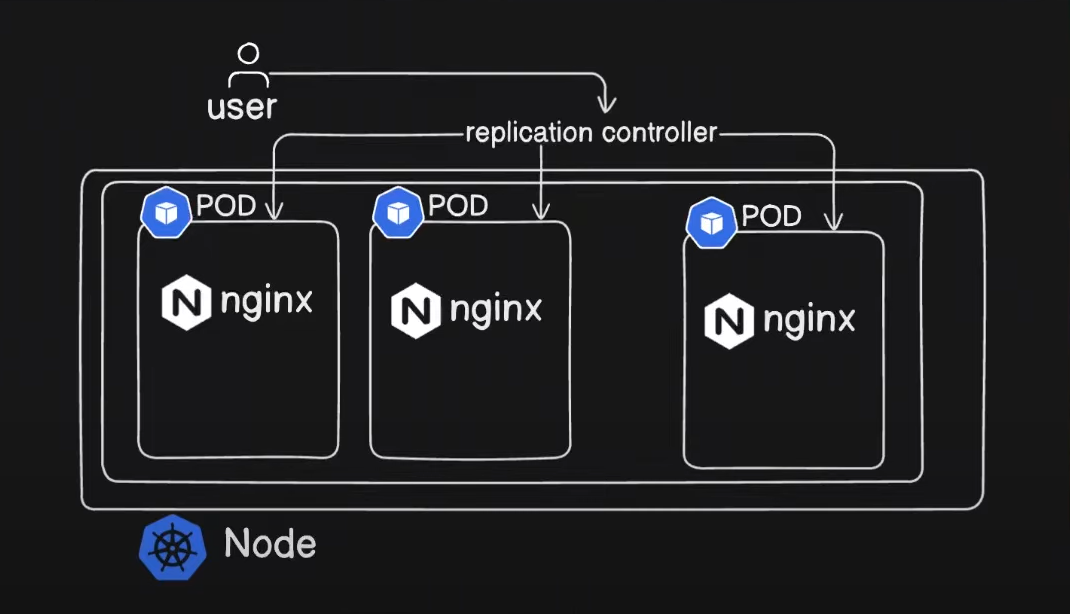
What is a ReplicaSet in Kubernetes?
A ReplicaSet is the next-generation Replication Controller with a more flexible and expressive pod selection mechanism. While Replication Controllers use equality-based selectors, ReplicaSets support set-based selectors, allowing more sophisticated pod selection criteria.
Key Characteristics of ReplicaSets:
Selector Flexibility: Uses set-based selectors for more advanced pod selection.
Backward Compatibility: Supports existing Replication Controller use cases.
Integrated with Deployments: Typically used indirectly through Deployments.
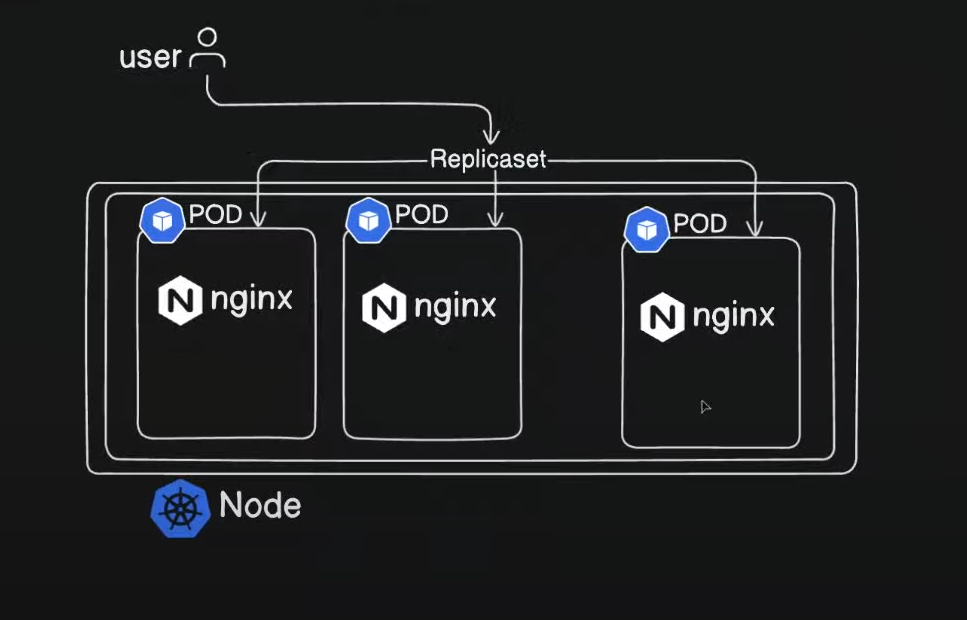
Creating a ReplicaSet:
ReplicaSet:https://kubernetes.io/docs/concepts/workloads/controllers/replicaset/
Create a ReplicaSet based on the nginx image with 3 replicas:
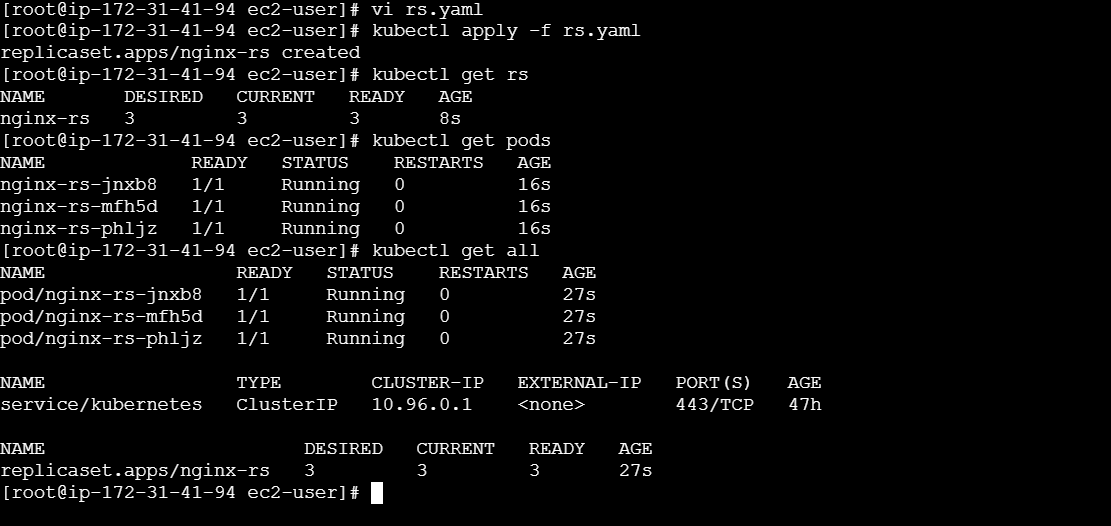
Update the replicas to 4 from the YAML:
Edit the YAML file (e.g.,
rs.yaml) and changereplicas: 3toreplicas: 4, then apply the changes:kubectl edit rs/nginx-rs
Update the replicas to 6 from the command line:
kubectl scale rs nginx-rs --replicas=6
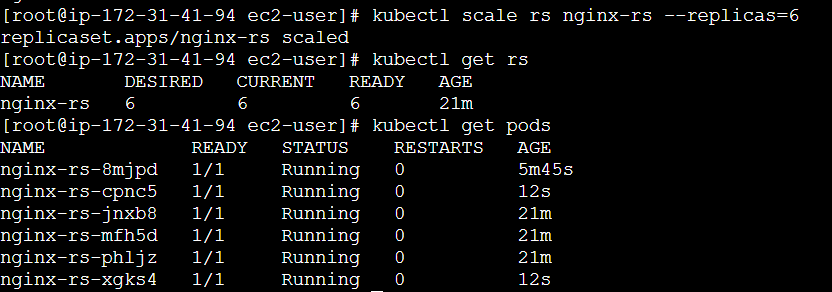
What is a Deployment in Kubernetes?
A Deployment provides declarative updates to applications, managing ReplicaSets to facilitate the deployment, scaling, and rolling updates of pods. Deployments offer advanced capabilities such as rollback, pause, and resume.
Key Characteristics of Deployments:
Declarative Updates: Defines the desired state and lets Kubernetes handle the rest.
Rollback: Easily revert to previous versions in case of issues.
Pause/Resume: Temporarily halt and resume updates for controlled rollouts.
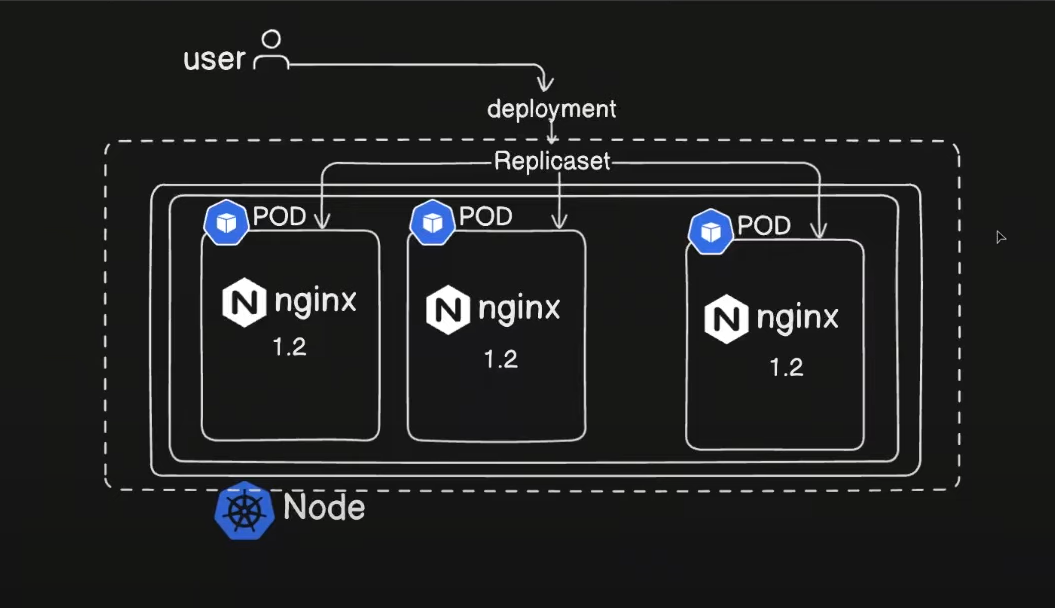
Creating a Deployment:
Deployment:https://kubernetes.io/docs/concepts/workloads/controllers/deployment/
Create a Deployment named
nginxwith 3 replicas. The Pods should use thenginx:1.23.0image and the namenginx. The Deployment uses the labeltier=backend. The Pod template should use the labelapp=v1.apiVersion: apps/v1 kind: Deployment metadata: name: nginx-deployment labels: tier: backend spec: replicas: 3 selector: matchLabels: app: v1 template: metadata: labels: app: v1 spec: containers: - name: nginx image: nginx:1.23.0List the Deployment and ensure the correct number of replicas is running:
kubectl get deploy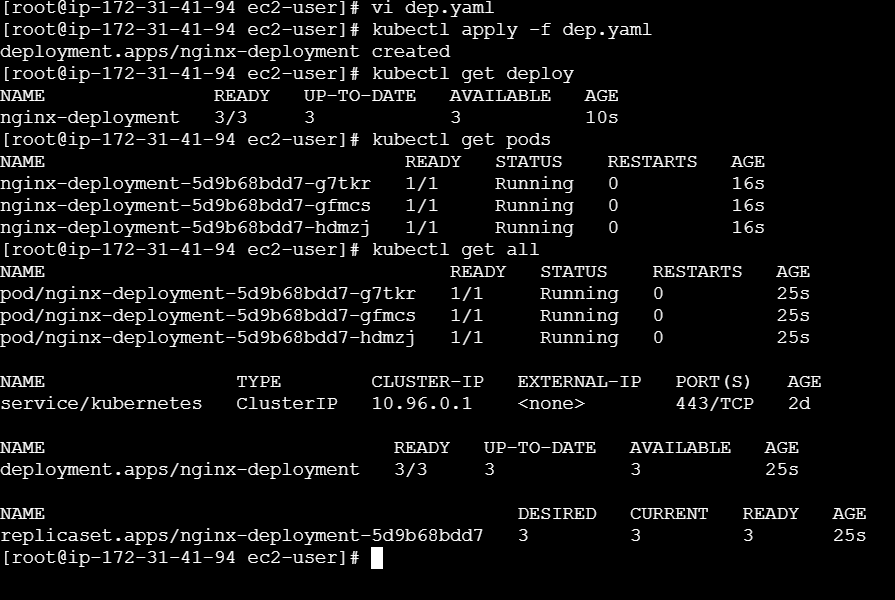
Update the image to nginx:1.23.4:
kubectl set image deploy/nginx-deployment nginx=nginx:1.23.4
Verify that the change has been rolled out to all replicas:
kubectl rollout status deploy/nginx-deployment
Assign the change cause "Pick up patch version" to the revision:
kubectl annotate deploy nginx-deployment kubernetes.io/change-cause="Pick up patch version"
Scale the Deployment to 5 replicas:
kubectl scale deploy/nginx-deployment --replicas=5
Have a look at the Deployment rollout history:
kubectl rollout history deploy/nginx-deployment
Revert the Deployment to revision 1:
kubectl rollout undo deploy/nginx-deployment --to-revision=1
Ensure that the Pods use the image nginx:1.23.0:
kubectl describe deploy nginx-deployment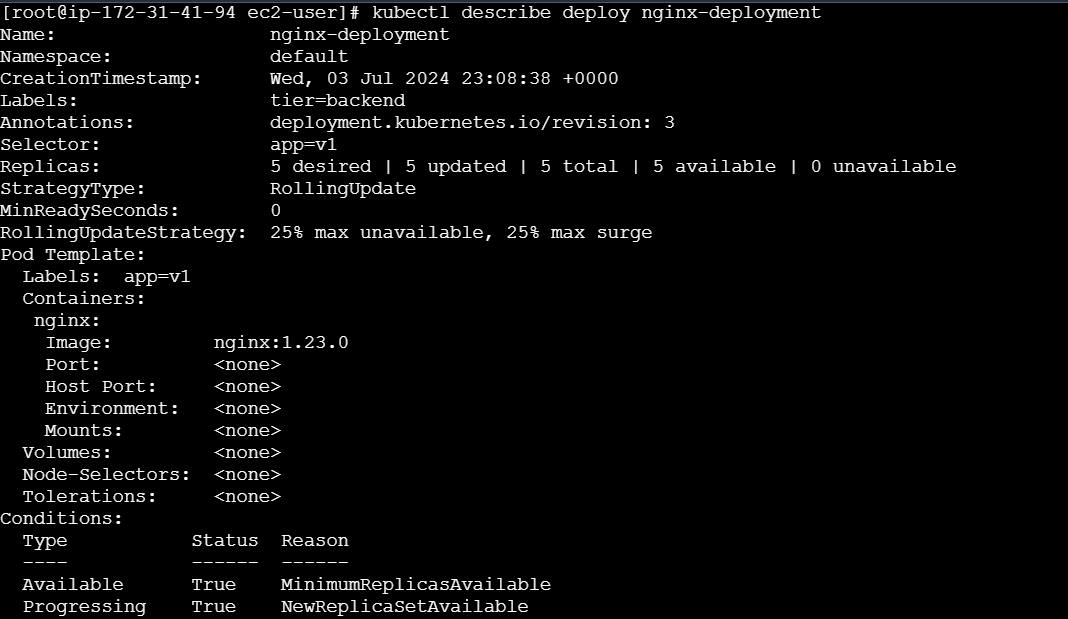

Delete the Deployment:
kubectl delete deploy nginx-deployment
1. Troubleshooting the issue:
Apply the below YAML and fix the issue with it
apiVersion: v1
kind: Deployment
metadata:
name: nginx-deploy
labels:
env: demo
spec:
template:
metadata:
labels:
env: demo
name: nginx
spec:
containers:
- image: nginx
name: nginx
ports:
- containerPort: 80
replicas: 3
selector:
matchLabels:
env: demo
Step 1: Save this YAML to a file (e.g., trouble1.yaml)
Step 2: Apply the YAML File Use the kubectl apply command to create the deployment:
kubectl apply -f nginx-deploy.yaml

Step 3: Identify the Errors
The YAML configuration for the Kubernetes deployment has a few issues:
- Incorrect API version: The correct API version for
Deploymentisapps/v1, notv1.
Step 4: Fixing the Errors
Here is the corrected YAML configuration:
apiVersion: apps/v1
kind: Deployment
metadata:
name: nginx-deploy
labels:
env: demo
spec:
template:
metadata:
labels:
env: demo
name: nginx
spec:
containers:
- image: nginx
name: nginx
ports:
- containerPort: 80
replicas: 3
selector:
matchLabels:
env: demo
In this corrected version:
- Change the
apiVersionfromv1toapps/v1.
Step 5: Verify the Deployment
Check the status of the deployment:
kubectl get deploy
Describe the deployment to ensure everything is configured correctly:
kubectl describe deploy nginx-deploy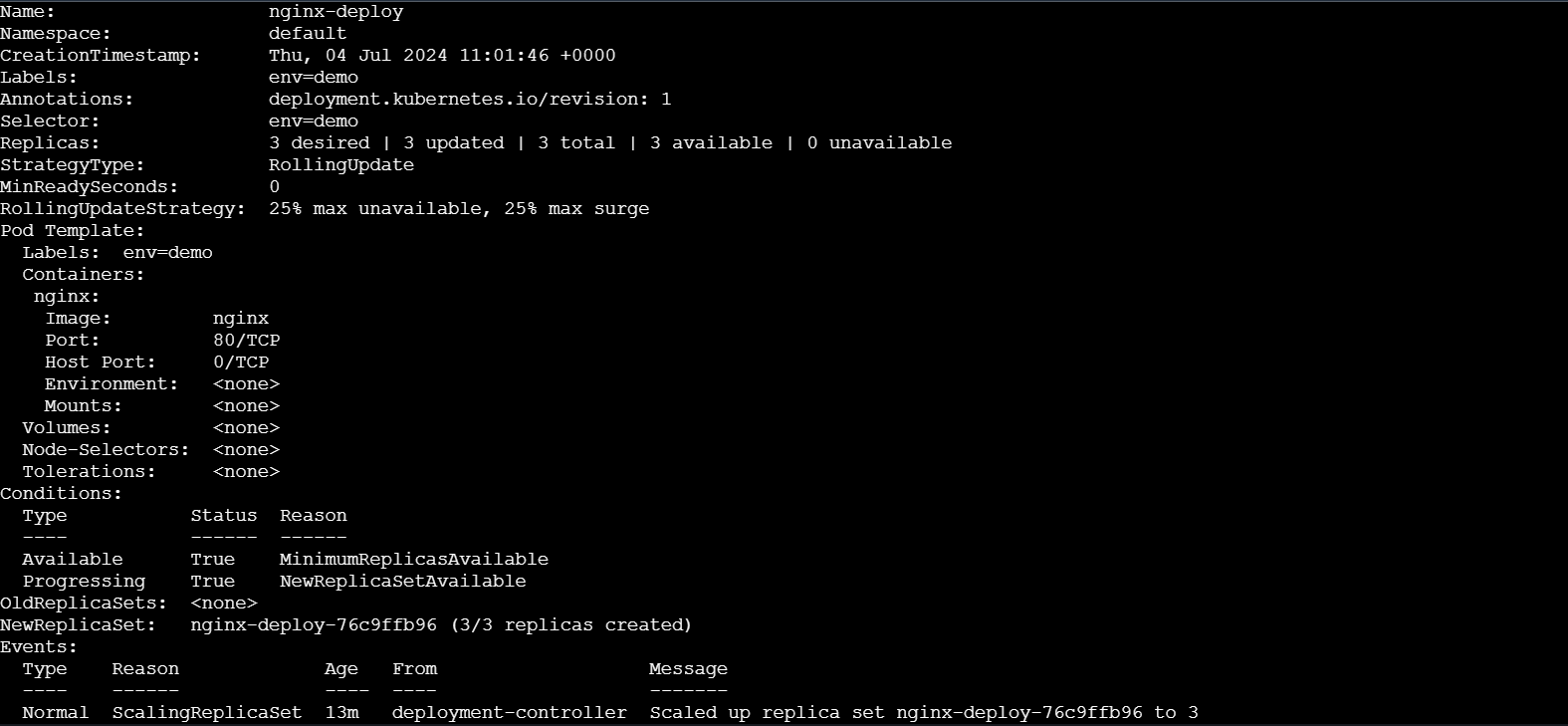
By following these steps, you should be able to fix the incorrect API version issue and successfully create the deployment.
Step 8: Monitor the Pods Check the status of the pods created by the deployment:
kubectl get pods

This step-by-step guide should help you troubleshoot and fix the issues with the provided YAML configuration.
2. Troubleshooting the issue:
Let's troubleshoot the given YAML configuration step by step, focusing on the issues present.
Initial YAML Configuration
apiVersion: v1
kind: Deployment
metadata:
name: nginx-deploy
labels:
env: demo
spec:
template:
metadata:
labels:
env: demo
name: nginx
spec:
containers:
- image: nginx
name: nginx
ports:
- containerPort: 80
replicas: 3
selector:
matchLabels:
env: dev
Step 1: Identify the Errors
Incorrect API version: The correct API version for
Deploymentisapps/v1, notv1.Mismatch in matchLabels: The
matchLabelsselector should match the labels in the pod template. Here, theenvlabel inmatchLabelsis set todev, while in the pod template it's set todemo.

Step 2: Fix the Errors
Error 1: Correct the API Version
Change the apiVersion from v1 to apps/v1.
Error 2: Match Labels Correctly
Ensure that the matchLabels in the selector matches the labels in the pod template.
Corrected YAML Configuration
apiVersion: apps/v1
kind: Deployment
metadata:
name: nginx-deploy
labels:
env: demo
spec:
template:
metadata:
labels:
env: demo
name: nginx
spec:
containers:
- image: nginx
name: nginx
ports:
- containerPort: 80
replicas: 3
selector:
matchLabels:
env: demo
Step 3: Apply the Corrected YAML
Save the corrected configuration to a file name trb.yaml and apply it using kubectl:
kubectl apply -f trb.yaml

Step 4: Verify the Deployment
Check the status of the deployment:
kubectl get deploy
Describe the deployment to ensure everything is configured correctly:
kubectl describe deploy nginx-deploy
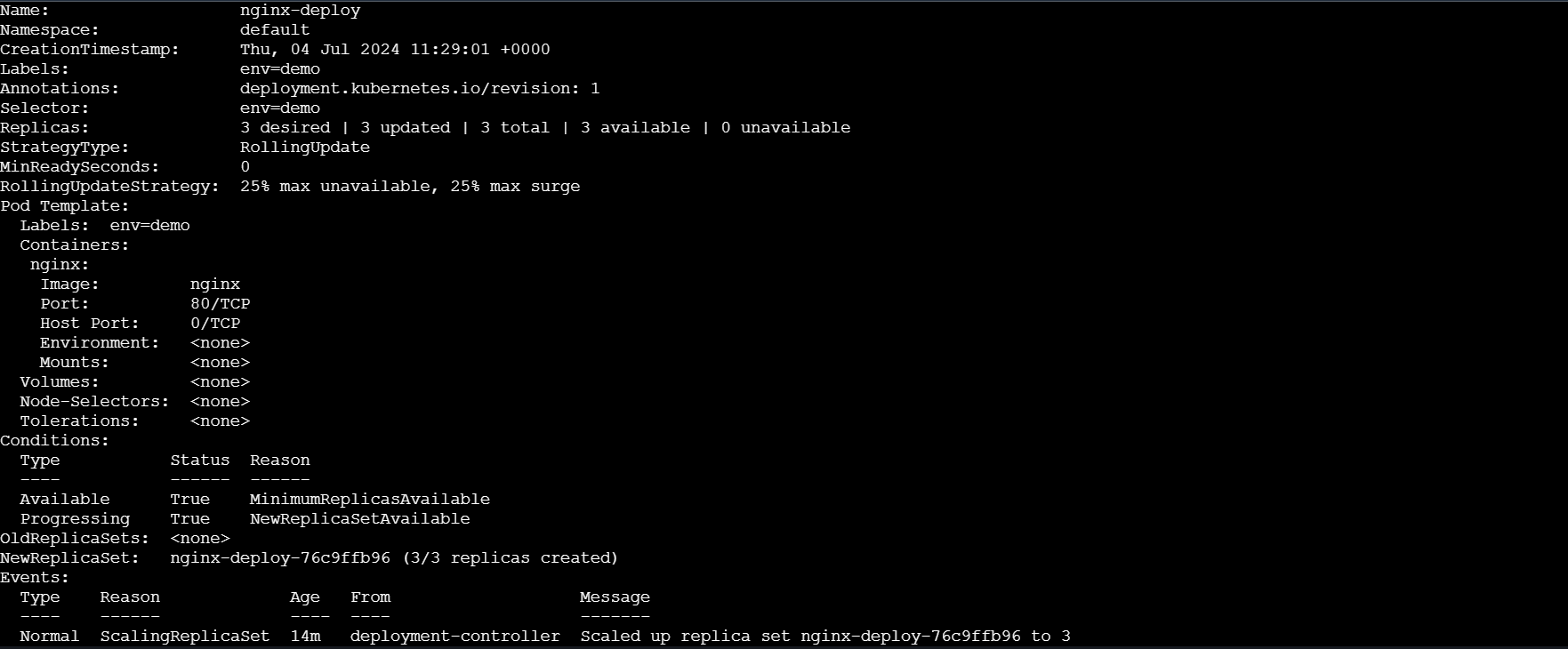
By following these steps, you should be able to fix the issues and successfully create the deployment.
Conclusion
In this blog, we explored some essential Kubernetes concepts and practical steps to manage and scale applications using Replication Controllers, ReplicaSets, and Deployments. By understanding the differences and advantages of each resource, you can ensure your applications are resilient, scalable, and easily maintainable.
We walked through creating ReplicaSets and Deployments using both kubectl commands and YAML configurations, emphasizing the importance of declarative management. Additionally, we covered troubleshooting common issues with YAML configurations to ensure smooth deployments.
As you continue your Kubernetes journey, these foundational concepts and hands-on tasks will be invaluable in managing and scaling your applications effectively. Stay tuned for more insights and practical tips in our ongoing #40DaysOfKubernetes challenge!
References
For more detailed information and quick access to Kubernetes commands and concepts, refer to the following resources:
Cheatsheet for Kubernetes Commands:
Kubernetes kubectl Quick ReferenceReplicaSet:
Kubernetes ReplicaSetDeployment:
Kubernetes DeploymentReplication Controller:
Kubernetes Replication ControllerVisual Insight:
Check out today's lesson for visual insight: Watch on YouTube
These resources provide comprehensive insights and command references that are essential for managing and scaling your Kubernetes applications effectively.
Subscribe to my newsletter
Read articles from SHRIRAM SAHU directly inside your inbox. Subscribe to the newsletter, and don't miss out.
Written by
